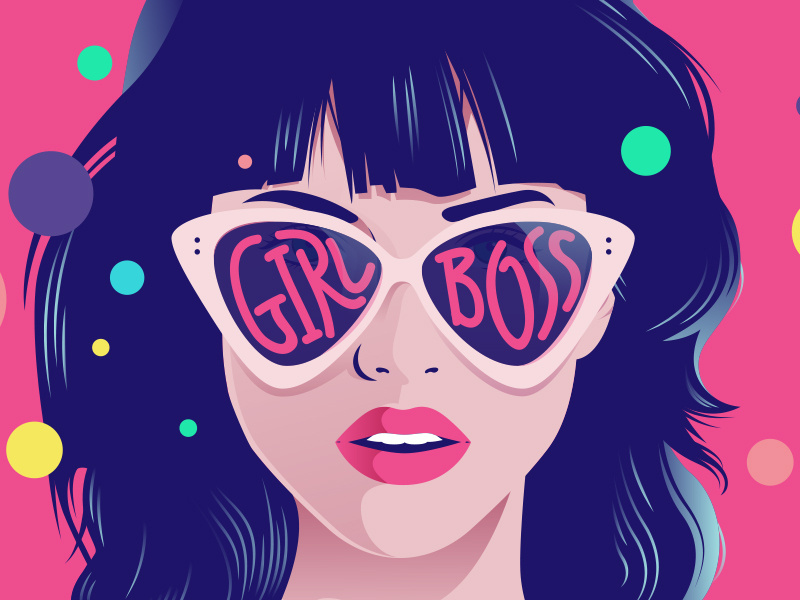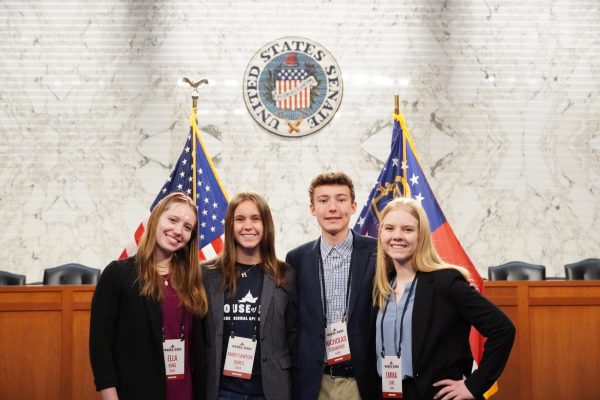The Decline of Fourth Wave Feminism and the Death of the #Girlboss
A few years ago, one of the most popular things to write about was millennial culture. How millennials killed department stores and casual dining and marriage and golfing and every other industry that fell victim to changes in demand and taste. But if there’s one thing I actually believe millennials killed, it’s fourth-wave feminism.
A bold statement, I’m aware, but one arguably important to anyone looking to participate in comprehensive and intersectional feminism. To understand the impact of millennial women on modern feminism, you need to have an understanding of the waves that preceded theirs. You may notice a few trends.
First wave feminism, at least in the United States, was predominantly made up of white women like Susan B. Anthony and Elizabeth Cady Stanton, the role models of future generations for millions of women, but especially those of similar social standing. The primary goal of first wave feminists was to gain the right to vote, but, once again, this activism was mostly restricted to the disenfranchisement of white women, not women of color. Stanton especially is often overlooked in regards to her belief in the superiority of white issues over all else. Despite these difficulties, though, first wave feminists eventually gained some political power through voting and the election of a few women into public office.
Second wave feminism expanded the argument from enfranchisement to a larger vision of equality to the opposite sex. Second wave feminists addressed issues that had been seen as taboo up until that point, including sexual liberation, sex work, marital violence and rape, and workplace inequalities. Being that this movement began in the early 1960s, it was certainly more inclusive than its predecessor, but far from intersectional. Like first wave feminism, this wave coincided with an American Civil Rights Movement, the first being that of abolition, and the second being the movement calling for the right to vote and an end to segregation, among other factors of inequality plaguing Black Americans.
The third wave can largely be traced backed to 1991 and Anita Hill’s testimony against Supreme Court nominee Clarence Thomas, whom Hill accused of sexual harassment in front of a Senate Judiciary Committee made up entirely of white men. Journalist Rebecca Walker commented on Thomas’s subsequent appointment in the article “Becoming the Third Wave”, written for Ms. magazine and quoted below:
“So I write this as a plea to all women, especially women of my generation: Let Thomas’ confirmation serve to remind you, as it did me, that the fight is far from over. Let this dismissal of a woman’s experience move you to anger. Turn that outrage into political power. Do not vote for them unless they work for us. Do not have sex with them, do not break bread with them, do not nurture them if they don’t prioritize our freedom to control our bodies and our lives. I am not a post-feminism feminist. I am the Third Wave.”
Third wave feminism largely sought to bring awareness to the nuance and power of the patriarchy and the ways in which male power and gaze creeps into almost every aspect of female life. Additionally, it oversaw possibly the largest introduction of intersectionality into American feminism, as well as incorporating new feminist theory into activism. This wave ran until about 2012, when the fourth wave, or the era of female empowerment, was born.
I include this brief history lesson to emphasize this: fourth wave feminism was the first wave of the movement to heavily include the internet as a tool for education, inclusion, and awareness. “Hashtag feminism”, or the increased use of social media as a way to amplify female voices, is what particularly separates this wave from others, as well as the aspect that so heavily implicates millennials in the issues that people take with it.
As much as I cringe at blaming an entire generation for the misrepresentation of feminist theory, it’s an important distiction to make, being that millennial activists have been some of the loudest voices behind the screen of internet activism.. And although there will always be differences between generations, the prevalence of internet activism has made it especially easy to see the areas of feminism that the generation before mine has impacted the most. The worst of which being the idea of female empowerment, or “Girlboss” feminism.
On paper, the criticism seems horrendous. Why would someone want to criticize the idea of women having power? Or feeling empowered? And, on paper, I would argue: nothing. In fact, women’s empowerment feels like an ideal we’ve been working toward in the past 100 years or more.
My issue with this campaign stems not from the intention, but the rhetoric used to promote it as well as the complete removal of nuanced argument. The idea that power is inherently connected to equality and progress, especially in a country that arguably relies on the oppression of some for the profit of others, is incredibly flawed, and in tandem with internet activism, is incredibly dangerous.
First and foremost, the danger of calling any woman in power a Girlboss or an empowered woman, despite their actual impact on the feminist movement and the fight for women’s equality, lies within the ease of doing so. With a simple tweet or post, activists looking to uplift women in the name of feminism can quickly tie a woman who, while in power, has actually actively oppressed people, to a movement calling for the opposite.
Female politicians are a perfect example of this. By placing Vice President Kamala Harris, for example, on a pedestal or as a beacon of hope for women, all subtlety in regards to whether Harris actively fights female oppression is removed. She thereby takes on an idealized version of herself closer to a caricature than an actual person.
A quick Google search for Harris’s record as Attorney General of California reveals her extensive history with incarcerating people for non-violent offenses, as well as often siding with conservatives when given the opportunity to help implement more progressive criminal justice reforms.
By so heavily relying on internet activism, however, there can only be good politicians or bad politicians. Harris, almost exclusively by being a woman, has effectively achieved the status of an empowered woman despite actively working towards disempowering others.
Let me be clear: it is inspiring that Harris has had the political success that she’s had. I fully understand why this is what progress looks like to a lot of people. But it’s not fair to anyone to align women with progressing feminism when they’ve done almost nothing of the sort.
Additionally, this kind of rhetoric, simply allowing a woman’s status to speak for her, can be so easily weaponized by people, especially politicians, who cling to their status as a member of the oppressed sex as a way to appeal to voters.
White women, especially, can see the idolizing of women through the “Women’s Empowerment” movement as a way to place themselves among people they actually have no intention of helping. This “common folk” identity is a fantastic way to essentially trick people into believing that because you, too, face oppression of some sort, you stand to benefit from this empowerment-focused brand of feminism.
This isn’t solely based on my criticisms of Harris, either, as this idea of equating workplace or political power to the progress of the women’s equality movement is far from new. As The Atlantic explained in a June 2020 article entitled “The Girlboss Has Left the Building”, the idea of the digital-age business woman was largely popularized by Sophia Amoruso, founder of the fast-fashion brand Nasty Gal. In it, author of the article Amanda Mull perfectly encapsulates what’s so concerning about the idea (or myth) of the corporate female:
“Amoruso’s vision of female corporate supremacy was celebrated and emulated by other aspiring entrepreneurs for years. [Her memoir, #Girlboss,] sold more than half a million copies, and Amoruso launched a media company of the same name, complete with networking conferences, branded merchandise, and a Netflix series. Soon, the girlboss ideal became a template for marketing and writing about powerful women in virtually every industry. For a time, female wealth was treated as feel-good news unto itself.”
Just as female politicians are often praised for their power on the basis of sex, Amoruso was just one woman who used this way of thinking for her personal gain.
And although economic power is something that obviously will assist in breaking down current barriers that oppress on the basis of sex and gender, it’s important to remember that many people who have thrived under late-stage capitalism have exploited other people to get where they are. Using the clothing industry, for example, Nasty Gal likely could not have flourished the way that it did had it used environmentally sustainable practices and ethical labor. As unfortunate as this is, the American ideal of corporate success is often rooted in the inherent oppression of other people, placing the idea of the #girlboss at the antithesis of feminism’s goal towards bodily autonomy and societal equality.
As someone who identifies with the goals and progress of feminism itself, this rhetoric has placed me at a bit of a crossroads. I still call myself a feminist and I even still believe that feminists who believe in equating wealth and gender equality are doing so with the best of intentions. I also understand that using the internet as a way of relaying this message of office and political domination has its advantages. But at the end of the day, so much of fourth wave feminism has been defined by things that I simply don’t believe in, and the generational divide between Gen Z and millennials is a significant reason for this.
To find a solution to this, we have to return to the roots of the fourth wave and decide whether the major themes and trends that have occurred from 2012 to the present represent an intersectional and progressive model of feminism. Being that the past decade has been largely defined with creating a non-complex, hyperpalatable, and marketable ideal for women, my vote would be no, this is not what feminists should be aiming for.
As a feminist, the idea of the corporate American woman feels like when cartoons add long eyelashes and a bow to a male character as a lazy way of creating his female counterpart. Because no matter which way you brand it, no matter how easy it is to tack on to the end of a Tweet, and no matter how progressive it looks, the enemy is still the oppression of some for the gain of another, and a woman being successful the way an absurdly rich man is successful is, in my eyes, the opposite of making strides towards equality.
With this in mind, it’s clear that the goals of older feminists, many of whom came into political consciousness during the Obama era, do not always represent the place feminism should be moving toward. With more women holding office and spots on the Forbes list of “The World’s Most Powerful People” than ever before, it’s clear that this skewed perception of equality is making a strong impact on people across the world.
Despite this impact, however, I do not believe that fourth wave feminism, or the beast it’s been turned into, represents the interests of most women. As a white woman, my interests have largely been represented in previous waves, which is why third and fourth wave activists have worked very hard to make their goals as inclusive as possible. However, as long as we’re in a wave that’s been so heavily characterized by capitalism’s dream girl, I don’t think the movement is as intersectional as many feminists believe it to be.
If other feminists truly wish to create a movement that aims for true equality, we have to step away from quick fixes. Stripping women of their complexities in the name of uplifting them for their success is the first step. More importantly, however, is realizing that capitalism calls its staunch adherents to place profit above people, meaning that more often than not, the upholding of capitalist systems are what make equality so incredibly difficult to achieve.
This is not an idea so easy that it can be relayed in a hashtag, unfortunately. And neither is equality. This realization, essentially, is my hope for fifth wave feminism, the rise of which I hope to see within the next five years. And although internet activism can help make feminism more accessible, it should not be the primary vehicle of activism or activist education. Because without feminism that recognizes how difficult equality will be to achieve, the achievements we do make will leave much to be desired.
Your donation will support the student journalists of Chamblee High School Blue & Gold. Your contribution will allow us to print editions of our work and cover our annual website hosting costs. Currently, we are working to fund a Halloween satire edition.

Lucy Roberts is a senior and editor for the Blue & Gold. When she’s not writing op-ed’s or drawing cats, you can find her listening to Taylor Swift and making iced lattes at The Corner Cup. In five years, she hopes to be in a graduate program studying creative writing. This is her second year on the staff.










Boston Clavering • Mar 10, 2021 at 1:46 am
I am overwhelmed by the thoughtfulness, complexity and thoroughness of this article. Thank you, Lucy, for compelling us all to look more critically at this fourth wave of feminism in the US.